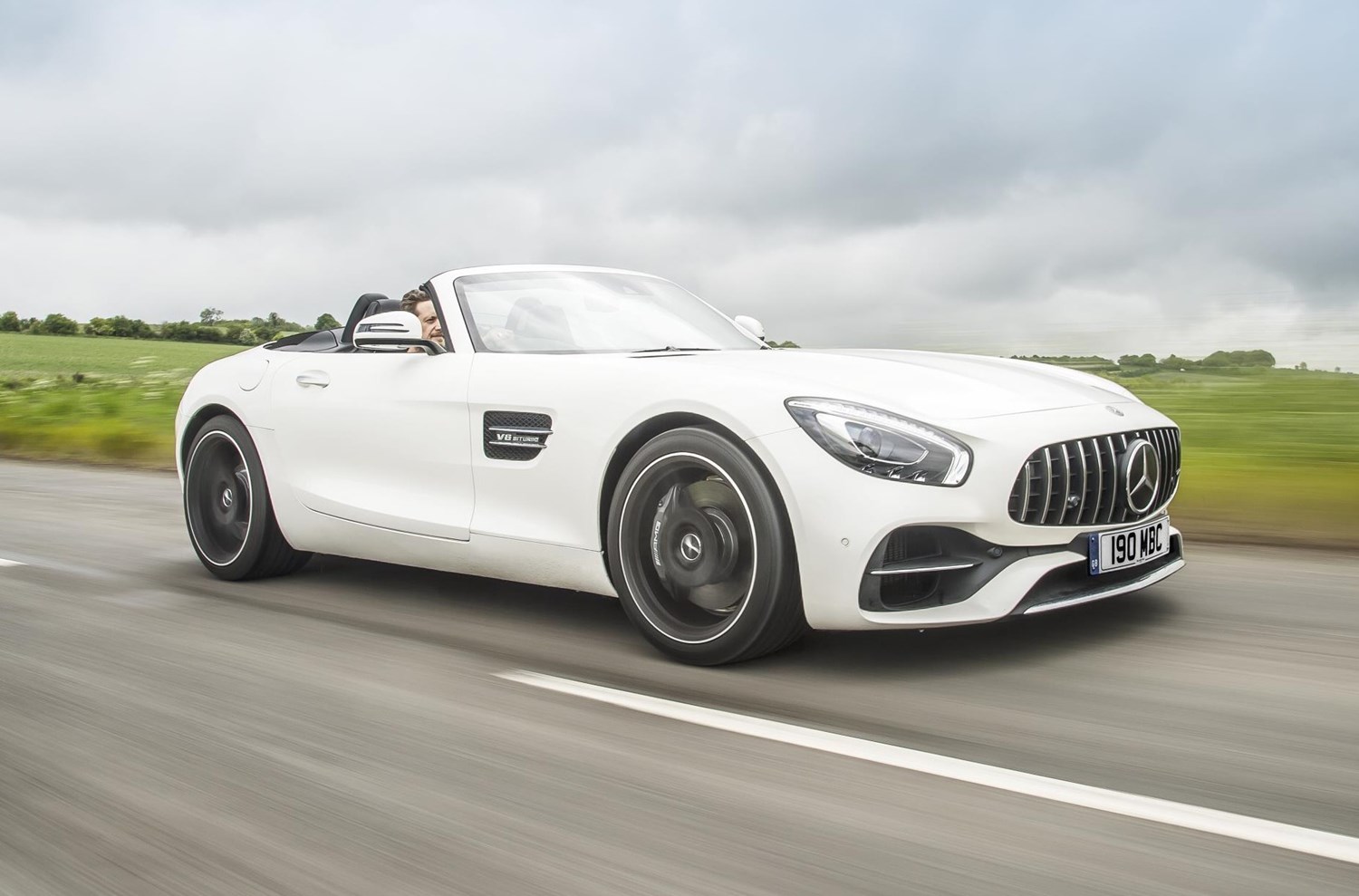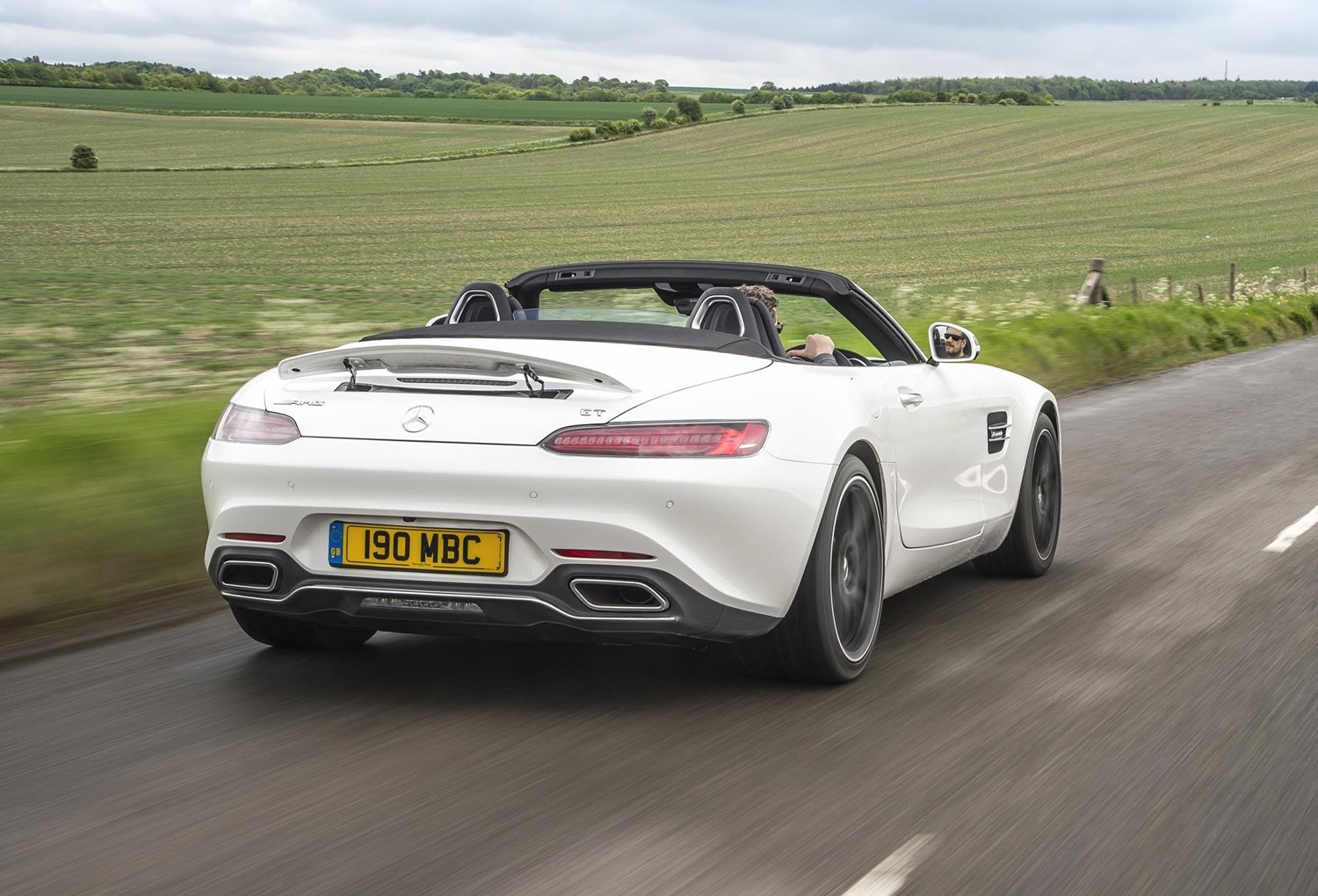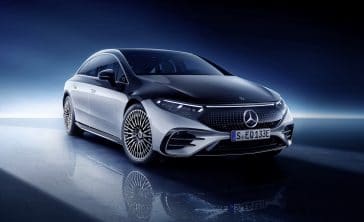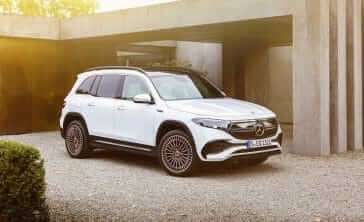Model review
The Mercedes-AMG GT was launched as the successor to the slow-selling gullwing-inspired SLS AMG. Shown to the public for the first time in late 2014, it went on sale in March 2015.
An AMG GT S version was also launched at the same time, with slightly more power and more of a performance emphasis than the standard grand-touring AMG GT. It was 2017 that saw the main developments to the AMG GT range with roadster and supercar versions being launched.
The AMG GT R is the fastest in the range, and is able to accelerate from 0-60mph in just 3.4 seconds. It is noticeably more aggressive in its looks than the standard car with its black wheels and muscular stance. This year also saw the launch of a convertible version of the AMG GT, and a GT C model, which came with a limited-run version called Edition 50.
Latest model
As three new AMG GT variants have been launched in 2017, we will mention each one individually.
First up – the AMG GT R. This heavily tuned version of the AMG GT S is one of Mercedes’ fastest cars ever, and was heavily developed for track use, where it excels. Despite it only having 74bhp more than the AMG GT S, it feels miles quicker, although its hardcore drive makes it a bit of a handful to drive on UK roads.
Next is the Mercedes AMG GT Roadster, the stunning convertible version of the AMG GT. The Roadster version is available as a GT, GT S and GT C.
The GT C Edition 50 is the car to mark AMG’s 50th anniversary of producing fast and often bizarre performance concoctions. The Edition 50 is a limited-edition version of the GT C.
Value for money
Anything that is as expensive as the AMG GT is never going to be seen as great value for money.
Its entry price is quite hefty – starting at £99,960 for the coupe and £111,360 for the Roadster. It is more expensive than the Porsche 911, one of its closest rivals, which has the advantage of being a 2+2.
While the standard model is largely well-equipped, featuring 19-inch AMG alloy wheels, AMG sports seats, Nappa leather upholstery and an AMG performance exhaust, it does miss out on certain features that really should come as standard on a £100,000 car. For example, you don’t get a reversing camera below the GT C trim.
The standard AMG GT has changed very little in its two years of production, meaning that 2015 examples can be picked up for less than £80,000 – a sizeable chunk off the original list price. More powerful GT S examples are also not that different in price on the used market. We saw a 2015 AMG GT S for sale at £79,950, and while it had done 23,000 miles, slightly more than normal, it seemed like a great buy.
Looks and image
This is a category where the AMG GT really comes into its own.
The AMG GT is arguably the best-looking Mercedes currently on sale, with its swopping great bonnet and muscular rear wheel arches. It really does stand out on the road, and for the right reasons. Mercedes have a strong brand image, and with the AMG GT being at the top of the ladder in the Mercedes-AMG range, it is one of the most desirable cars you can buy at this price point.
All models are fitted with AMG’s fabulous 4.0-litre V8 engine, that comes in various tunes. Not only does it sound incredible, but it offers some superb performance.
Yet, despite all the power and drama, it settles down surprisingly well when you want it to. While it doesn’t offer the comfort of a luxury car, for a sports car with this much power it is surprisingly comfortable and is only let down by intruding wind noise from the wide tyres.
Space and practicality
As you would probably expect, the AMG GT is not a practical car. It is a strict two-seater, the Porsche 911 which you can squeeze people into the rear in. There is plenty of up-front space, though, even despite the low driving position.
Because of the lack of rear seats, there is actually quite a lot of boot space. It has a 350-litre boot which is easily enough for carrying luggage for any overnight stays. Even if the boot is still quite awkwardly shaped, it eclipses both the Porsche 911 and Jaguar F-Type for space.
It comes as no surprise that Mercedes has never handed any of its AMG GTs over to EuroNCAP for safety testing, but the various safety assists fitted to the AMG GT should mean that it is a safe car. It comes with Collision Prevention Assist Plus that alerts you if you are following a car too closely and can brake if it senses a crash is imminent. It is also fitted with traffic-sign recognition, lane-departure warning, blind-spot warning and Attention Assist that monitors the driver’s behaviour.
Engines
All variants of the AMG GT come with Mercedes-AMG’s 4.0-litre V8.
The standard GT has 469bhp, while the GT S has a 515bhp output. Moving up the range, the GT C has 557bhp and sitting at the top of the AMG GT line-up is the GT R which comes with a monstrous 577bhp. All versions come with a seven-speed dual-clutch paddleshift automatic transmission.
Running costs
The AMG GT will be a costly car to run whichever version you go for, although the standard model’s claimed economy figures are perhaps not as bad as you would think from a V8 sports car. It returns 30.4mpg on the combined cycle and emits 216g/km of CO2. As a comparison, the GT R is exceptionally thirsty – returning 24.8mpg and emitting a whopping 259g/km of CO2.
The greatest tax sting will come in the first year, when because of the AMG GT’s high emissions you will pay £1,200 for the AMG GT and GT S and a crazy £2,000 for the GT C and GT R. After the first year, however, this drop to the flat £140 per year. You will also pay the standard £310 supplement for the car’s first five years of registration because it costs over the £40,000 threshold.
All versions of the AMG GT sit in the highest insurance group – 50, although this is quite common in cars that offer this level of performance such as the Porsche 911 Turbo and Audi R8 V10.
Things to look out for
Because of the care taken by Mercedes-AMG to build the AMG GT - AMG’s engines are still built by hand, and come with a signed plaque from the person who built it - there shouldn’t really be many problems at all. New Mercedes’ have also been found to be reliable, too, so there is very little to look out for.
Rivals
The AMG GT’s most direct rivals include the Jaguar F-Type R or SVR, Porsche 911, Audi R8 and soon-to-be-replaced Aston Martin Vantage. Some indirect rivals to the AMG GT include the Maserati Gran Turismo and McLaren 570S. The Aston Martin DB11 could also be considered a competitor, too, even featuring a re-worked version of the same 4.0-litre V8 engine that’s in the AMG GT.
Depreciation
Depending on which model you choose, depreciation varies. On the standard AMG GT, GT S and GT C Coupe, depreciation is quite substantial. As previously mentioned, these versions have suffered quite hefty depreciation since they were launched, meaning versions can now be picked up for under £80,000 – shaving nearly £20,000 off the original list price in just two years.
However, currently there is still quite a lot of demand for the AMG GT Roadster and AMG GT R, which keeps prices high for both. For the latter, bearing in mind it has a list price of just under £145,000, is currently selling for £190,000 on the ‘used’ market, as owners pay well over the odds to jump the hefty AMG GT R’s waiting list.





